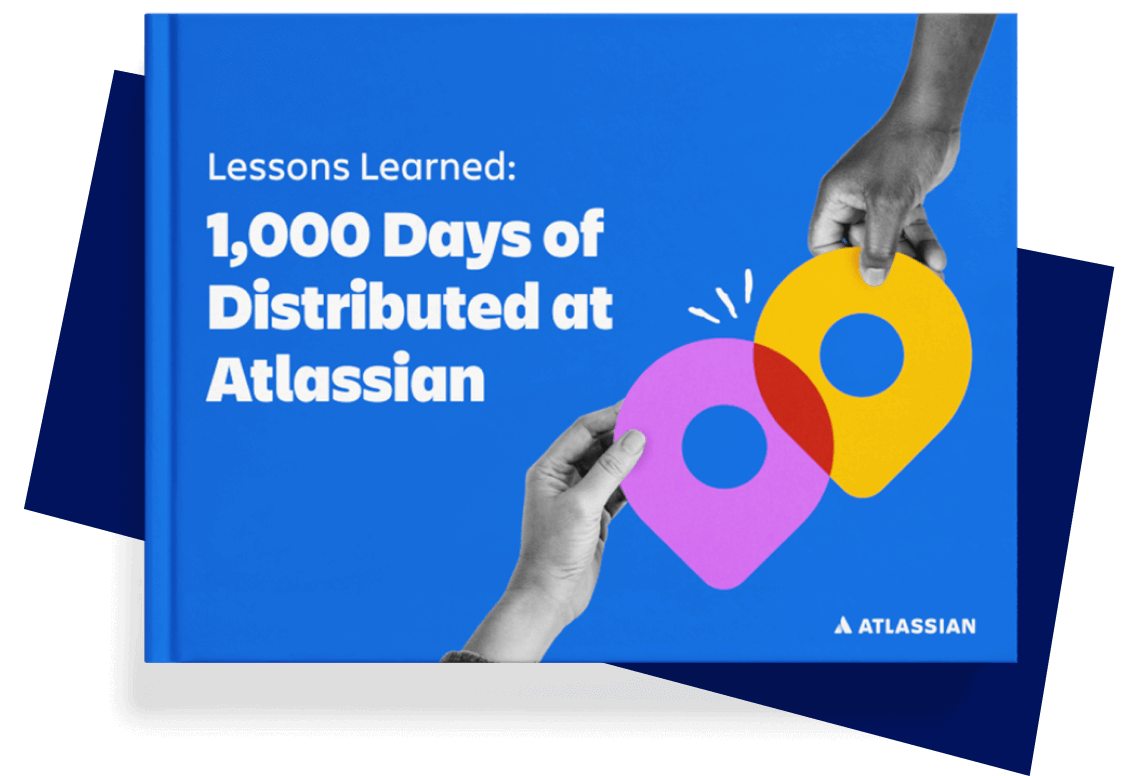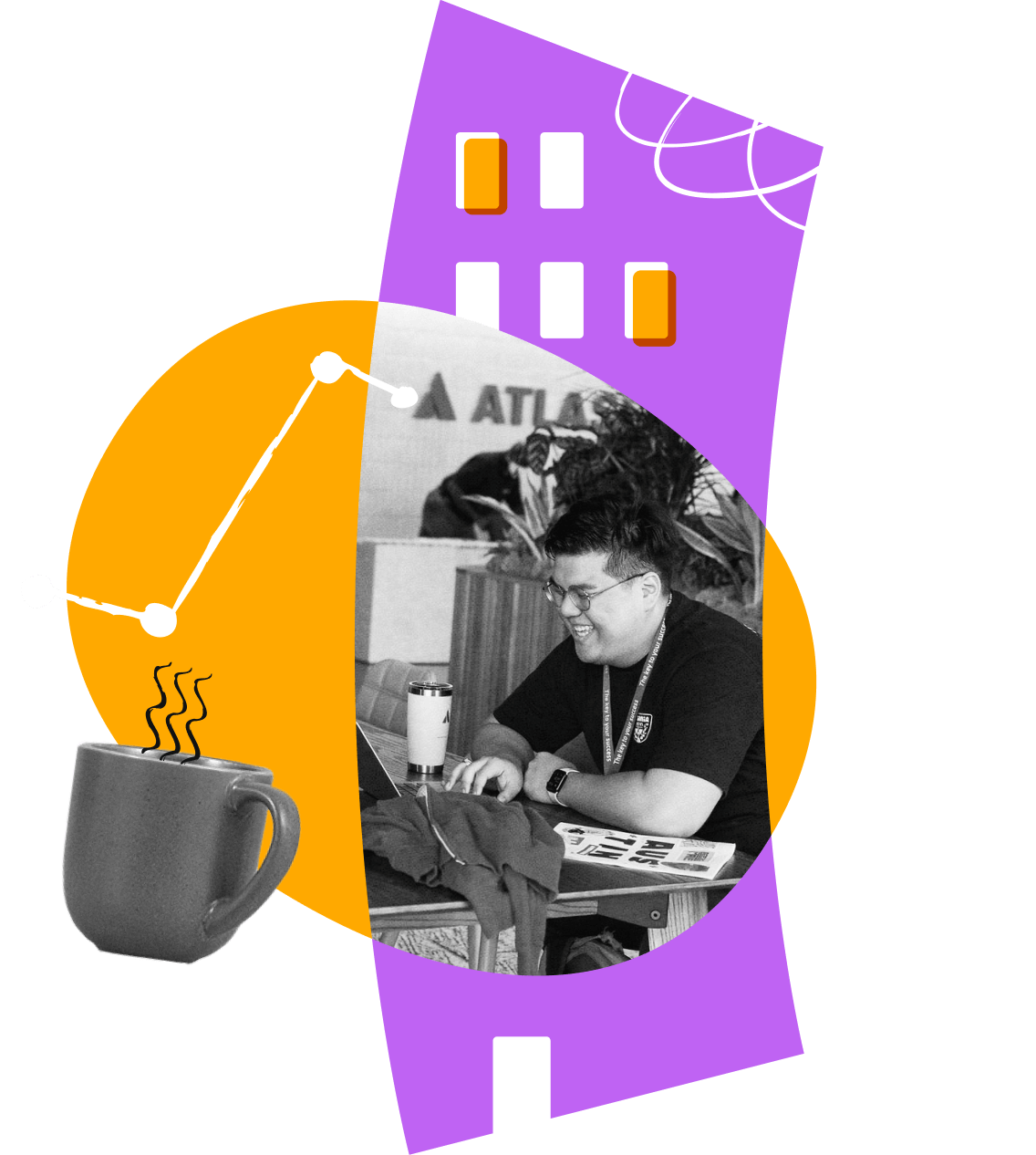Research Report
Lessons Learned: 1,000 Days of Distributed at Atlassian
Every company at scale is distributed. At Atlassian, we’re using behavioral science to uncover how to do distributed work well.
In this report, you’ll find key insights and practical recommendations to help you lead your (already) distributed teams to success.

How we know our approach works
We get work done
Early research shows distributed teams are more productive because they adopt new ways of working.
We’re connected
We’ve proven that intentionally bringing teams together 3-4 times per year has a greater impact on connection than sporadic office attendance.
We still go to the office
Even with a "work from anywhere" policy, 80% of Atlassians visit an office each quarter.
And, people want to work here
Candidate offer accept rate has increased 20% since we let Atlassians choose where to work.

Productivity
How we improve productivity at work
Fortune 500 executives rate low productivity as their #1 challenge. Learn how we track and make progress visible, carefully structure our time, and run effective, high-quality meetings.
Connection
How we keep distributed teams connected
In-person time is critical, but teams don’t need to be together 260 days a year. Our research shows that intentional team gatherings boost connection for 4-5 months, especially among new graduates and new hires.


Offices
Use data to reimagine the office
You don’t need an office to do great work. That doesn’t mean offices don’t matter. Read about our proprietary metrics and how they help us drive operational efficiency for our real estate footprint.
Global teamwork that works
Learn what's worked for us and what we’re still testing. Use our evidence-based insights to improve online collaboration within your organization.

